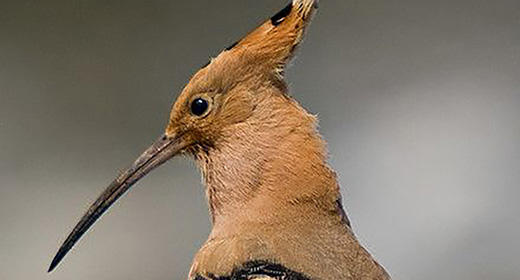by Rupert Sheldrake: For many years animal trainers, pet owners and naturalists have reported various kinds of perceptiveness in animals that suggest the existence of psychic power…

or at the very least, powers that are not well-developed in humans.
Since 1994, with the help of hundreds of animal trainers, shepherds, veterinarians, and pet and service dog owners, I have been investigating some of these unexplained animal powers.
The most common form of seemingly telepathic response is the anticipation by dogs and cats of their owners’ homecoming, or departure; the anticipation of being fed; of when their owners intend to take them to the vet; of when their owners are planning to take them for a walk; and animals that get excited when their owner is on the telephone, even before the telephone has been answered.
As skeptics rightly point out, some of these responses could be explained in terms of routine expectations, subtle sensory cues, chance coincidence and selective memory, or put down to the imaginations of doting pet owners. These are reasonable hypotheses, but they should not be accepted in the absence of evidence. To test these possibilities, it is necessary to do experiments.
My colleagues and I concentrated on the phenomenon of dogs who know when their owners are coming home. Many pet owners have observed that their animals seem to anticipate the arrival of a member of the household, often ten minutes or more in advance. The pets typically wait at a door, window or gate. In random household surveys in Britain and the U.S., an average of fifty-one per cent of dog owners and thirty per cent of cat owners said they had noticed such anticipatory behavior.
The dog I investigated in most detail was a terrier called Jaytee, who belonged to Pam Smart, of Manchester, England. Pam adopted Jaytee from a shelter in 1989 when he was still a puppy and soon formed a close bond with him.
In 1991, when Pam was working as a secretary at a school in Manchester, she left Jaytee with her parents, who noticed that the dog went to the window almost every weekday at about 4.30 pm, around the time Pam left work, and waited there until she arrived home some forty-five minutes later. Pam worked routine office hours, so the family assumed that Jaytee’s behavior depended on some kind of time sense.
Pam was laid off 1993 and, unemployed, was no longer tied to any regular pattern of activity. Her parents did not usually know when she would be coming home, but Jaytee still correctly anticipated her return.
In 1994 Pam read an article about my research and volunteered to take part. In more than one hundred experiments we videotaped the area by the window where Jaytee waited during Pam’s absences, providing a continuous, time-coded record of his behavior, which was blind-scored by a third party who did not know the details of the experiments. To check that Jaytee was not reacting to the sound of Pam’s car or other familiar vehicles, we investigated whether he still anticipated her arrival when she traveled by unusual means: by bicycle, train, or taxi. He did.
We also carried out experiments in which Pam set off for home at times selected at random, communicated to her by means of a telephone pager. In these experiments, Jaytee still started waiting at the window around the time Pam set off, even though no one at home knew when she would be coming. The odds against this occurring by chance were more than one hundred thousand to one.
The evidence indicates that Jaytee was reacting to Pam’s intention to come home even when she was many miles away. Telepathy seems the only hypothesis that can account for the facts. (
The most remarkable case of animal telepathy that I have encountered is with an African grey parrot, N’kisi, who has the largest vocabulary of any animal in the world, currently more than fourteen hundred words. N’kisi uses language in a meaningful way and speaks in sentences. His owner, Aimee Morgana, is primarily concerned with exploring his linguistic abilities, but noticed that he often responds to what she is thinking by saying aloud what her thoughts are.
Aimee and I carried out a controlled test with randomized photographs in sealed envelopes. In a series of videotaped trials, Aimee opened an envelope and silently looked at the picture for two minutes, while N’kisi, in another room, on another floor, was filmed. In many of the trials he said words corresponding to the image Aimee was viewing.
There is much potential for further research on animal telepathy. If domestic animals are telepathic with their human owners, it seems very likely that animals are telepathic with each other, and that this may play an important part in the wild. Some naturalists have already suggested that the coordination of flocks of birds and herds of animals may involve something like telepathy, as may communication between members of wolf packs. In fact, my own research into what I call “morphic fields” sheds some powerful light on these phenomena.
Invisible connections between us
My theory of morphic fields postulates that all self-organizing systems – including societies, people, cats, plants, crystals and molecules – contain an inherent memory, and are linked by the field into a coherent whole.
My interest in morphic fields developed out of research I was conducting at Cambridge University on the development of plants. I was pondering how plants grow from seeds or spores into the characteristic form of their species. These are questions to do with what biologists call morphogenesis, the coming-into-being of form (Greek: morphe = form; genesis = coming into being), one of the great unsolved problems of biology.
The naive approach is simply to say that morphogenesis is genetically programmed. Different species follow the instructions in their genes. But a few moments’ reflection invalidates this reply. All the cells of the body contain the same genes. The same genetic program is present in your eyes, kidneys and fingers. If they are all programmed identically, how do they develop so differently?
Thanks to the triumphs of molecular biology, we know what genes actually do. Some code for the sequence of amino acids in proteins; others are involved in the control of protein synthesis: they enable organisms to make particular proteins. But these alone cannot account for form. Your arms and your legs are chemically identical. If ground up and analyzed biochemically, they would be indistinguishable. Yet they have different shapes. Something other than the genes and the proteins they code for is needed to explain their form.
Biologists who study the development of form in plants and animals have long been aware of these problems, and since the 1920s many have adopted the idea that developing organisms are shaped by fields called morphogenetic fields. These are rather like invisible blueprints that underlie the form of the growing organism. But they are not, of course, designed by an architect, any more than a “genetic program” is designed by a computer programmer. They are self-organizing regions of influence, analogous to magnetic fields and other recognized fields of nature.
The fields responsible for the development and maintenance of bodily form in plants and animals are called morphogenetic fields. In animals, the organization of behavior and mental activity depends on behavioral and mental fields. The organization of societies and cultures depends on social and cultural fields. [i] All these kinds of organizing fields are morphic fields. [ii]
I suggest that morphogenetic fields work by imposing patterns on otherwise random or indeterminate activity. Morphogenetic fields are not fixed forever, but evolve. The fields of Afghan hounds and sheepdogs have become different from those of their common ancestors, wolves.
How are these fields inherited? I propose that they are transmitted from past members of the species through a kind of non-local resonance, which I call “morphic resonance.” The morphic fields of social groups connect group members even when they are many miles apart, and provide channels of communication through which members can stay in touch—even at a distance. These fields also coordinate the behavior of individuals within social groups—for example the behavior of fish in schools, or birds in flocks. [iii]
Morphic resonance involves the influence of like upon like, the influence of patterns of activity on subsequent similar patterns of activity. The greater the degree of similarity, the greater the influence of morphic resonance.
Morphic resonance also gives an inherent memory to fields at all levels of complexity. Any given morphic system, say a squirrel, “tunes in” to previous similar systems, in this case previous squirrels of its species. Through this process each individual squirrel draws upon, and in turn contributes to, a collective or pooled memory of its kind. In the human realm, this kind of collective memory corresponds to what the psychologist C.G. Jung called the “collective unconscious.”
Morphic resonance should be detectable in the realms of physics, chemistry, biology, animal behavior, psychology and the social sciences. But long-established systems, such as zinc atoms, quartz crystals and insulin molecules, are governed by such strong morphic fields, with such deep grooves of habit, that little change can be observed. They behave as if they are governed by fixed laws.
By contrast, new systems should show an increasing tendency to come into being the more often they are repeated. They happen more readily as time goes on. For example, when a new chemical compound is synthesized by research chemists and crystallized, it may take a long time for the crystal to form for the first time. There is no pre-existing morphic field for the lattice structure. But when the first crystals form, they will make it easier for similar crystals to appear anywhere in the world. The more often the compound is crystallized, the easier it should be to crystallize.
In fact, new compounds do indeed tend to crystallize more easily the more often they are made. Chemists usually explain this effect in terms of crystal “seeds” from the new crystals spreading around the world as invisible dust particles in the air, or chemists learning from others how to do it. But the hypothesis of morphic fields predicts that this should happen anyway under standardized conditions, even if dust particles are filtered out of the air.
The easiest way to test for morphic fields directly is to work with societies of organisms. Individual animals can be separated in such a way that they cannot communicate with each other by normal sensory means. If information still travels between them, it implies the existence of interconnections of the kind provided by morphic fields. The transfer of information through morphic fields could help provide an explanation for telepathy, which typically takes places between members of groups who share social or emotional bonds.
When I started looking for evidence of field-like connections between members of social groups, I found that I was moving into realms very little understood by science. For example, no one knows how societies of termites are coordinated in such a way that these small, blind insects can build complex nests with an intricate internal architecture. [iv] No one understands how flocks of birds or schools of fish can change direction so quickly without the individuals bumping into each other.[v] They’re not all looking at the next bird or fish and deciding what to do; research has shown that their reactions are too quick for that. Rather, they’re drawing upon information they are each contributing to the morphic field.
Morphic resonance works on the basis of similarity: we are roughly similar to many people, but we are most similar to ourselves in the past. That’s why, consciously, we have our own memories, but if a group of people learn something new, there is good evidence that others who are similar are able to learn it quicker. What parent has not been amazed at the ease with which their very young children adapt to new technologies like computers and cell phones?
In one of the longest series of experiments in the history of psychology, conducted first at Harvard and then at Edinburgh and Melbourne universities, rats were trained to run a new maze and the behavior of their descendants was examined to see if maze-running ability was conveyed through the genes. On average, subsequent generations got better and better, but it turned out that the control rats, whose parents had never been trained, also got better. In fact, they showed the same improvement as rats descended from trained parents—so the ability was not passed on through the genes. These results suggest that contributions to the morphic field survive the death of individuals. We all have access to a collective memory, and we all contribute to it.
Because morphic fields extend beyond the brain into the environment, they also link us to the objects of our perception, enabling us to affect them through our intention and attention.[vi] This is another aspect of morphic fields that lends itself to experimental testing. Such fields would mean that we can affect things just by looking at them, in ways that cannot be explained in terms of conventional physics. For example, the feeling of being stared at, or of making someone turn around by staring at them, has been reported by between seventy percent and ninety-seven percent of adults and children. Martial artists, military snipers, celebrity photographers, and hunters all report this phenomenon and learn not to look too long or too intently at their targets because it tends to alert them.
The unsolved problems of animal navigation, migration, and homing may also depend on invisible fields connecting the animals to their destinations.[vii] In effect, these could act like invisible elastic bands linking them to their homes.
Biological implications of morphic resonance
There is already evidence from observations on fruit flies that morphic resonance effects may be occurring in the realm of morphogenesis. When fruit fly eggs were exposed to a chemical (diethyl ether), some of them developed abnormally, turning into flies with four wings instead of two. When this treatment was repeated generation after generation, more and more flies developed four wings, even if their ancestors had never been exposed to the chemical. [viii]
There is also much circumstantial evidence that animal behavior can evolve rapidly, as if a collective memory is building up through morphic resonance. In particular, large-scale adaptations have occurred in the behavior of domesticated animals all over the world.
One example concerns cattle guards. Ranchers throughout the American West have found that they can save money on cattle guards by using fake ones, consisting of stripes painted across the road. Real cattle guards are made of a series of parallel steel tubes, or rails, with gaps in between, which make it difficult for cattle to walk across them, and even painful to try. However, present-day cattle do not usually even try to cross the guards, and the illusory grids work just as effectively as the real ones. Cattle approaching an illusory grid “put on brakes with all four feet,” as one rancher expressed it.
Is this just because calves learn from older cattle that they should not try to cross? Apparently not. Several ranchers have told me that herds not previously exposed to real cattle grids will avoid the phony ones. Ted Friend, of Texas A & M University, has tested the response of several hundred head of cattle to painted grids, and has found that naive animals avoid them just as much as those previously exposed to real grids. [ix] Sheep and horses likewise show an aversion to crossing painted grids. This aversion may well depend on morphic resonance from previous members of the species that have learned to avoid cattle grids the hard way.
Morphic resonance in human learning
Morphic resonance has many implications for the understanding of human learning, including the acquisition of languages. Through the collective memory on which individuals draw, and to which they contribute, it should in general be easier to learn what others have learned before.
This idea fits well with the observations of linguists like Noam Chomsky who propose that language learning by young children takes place so rapidly and creatively that it cannot be explained simply in terms of imitation. The structure of language seems to be inherited in some way. In his book, The Language Instinct, Steven Pinker gives many examples to support this idea.
One of the few areas in which detailed quantitative data are available over decades is in the scores of IQ (Intelligence Quotient) tests. If morphic resonance occurs, average performance in IQ tests should be rising—not because people are becoming more intelligent, but because IQ tests should be getting easier to do as a result of morphic resonance from the millions who have done them before. This effect is now well-known, and is called the Flynn effect, after its discoverer, James Flynn.
Large increases in IQ test scores have occurred in many different countries, including the U.S., Japan, Britain, France, Germany and Holland.[x] Many attempts have been made to explain this “Flynn effect,” but none have succeeded.[xi] Flynn himself describes it as “baffling”.[xii] Morphic resonance could provide a natural explanation.
The ‘paranormal’ is normal
The theory of morphic fields and morphic resonance has far-reaching implications in all branches of science. One powerful implication is that some of the phenomena conventional science terms “paranormal” is simply the result of organisms—animal or human—tuning into the information available in the morphic field. Telepathic abilities are normal, not paranormal; natural not supernatural. We all draw upon a collective memory, whether we are aware of it or not. And even the so-called laws of nature are more like habits; they evolve as we evolve.









































